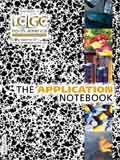Two Novel Multi-Mode Columns, SS-C18 and SW-C18, Provide Effective Separation of Catecholamines and siRNA
HPLC analysis of polar ionic compounds, such as catecholamines and siRNA, can be challenging due to the nature of their structures. Small polar compounds like catecholamines can be diffcult to retain and siRNA can be difficult to elute in reverse phase mode. The Scherzo Family of HPLC columns (SS-C18, SM-C18, and SW-C18) can overcome these challenges.
HPLC analysis of polar ionic compounds, such as catecholamines and siRNA, can be challenging due to the nature of their structures. Small polar compounds like catecholamines can be diffcult to retain and siRNA can be difficult to elute in reverse phase mode. The Scherzo Family of HPLC columns (SS-C18, SM-C18, and SW-C18) can overcome these challenges.
Experimental
All data was generated with a semi-micro HPLC system equipped with UV or ELS detection. Separation of catecholamines was performed comparing three 150 × 3 mm columns, the Scherzo SS-C18, Scherzo SM-C18, and Scherzo SW-C18. All three phases contain ODS ligands, anion ligands, and cation ligands. However, each phase has different amounts of ionic ligands with different ionic strengths, as shown in Figure 1.

Figure 1: Three novel multi-mode stationary phases.
Separation of siRNA was performed using the SW-C18 of dimensions 150 × 3 mm and gradient elution, as shown in Figure 3. SW-C18 shows multiple peaks for the separation of commercial siRNA reagents, which means that the hydrophobic and ionic components of the stationary phase are recognizing structural components in the siRNA.

Figure 2: Scherzo SS-C18 offers better retention of catecholamines.
Discussion and Results
The new multi-mode SS-C18 column shows improved retention and separation of catecholamines. Alternatively, the new multi-mode SW-C18 column is not only able to elute siRNA, but also able to recognize its structural components. These two new multi-mode columns will be beneficial to scientists who are looking for better selectivity than a conventional ODS column.

Figure 3: Scherzo SW-C18 elutes siRNA and recognizes structural components.
Imtakt USA
6703 Germantown Avenue, Suite 240, Philadelphia, PA 19119
tel. (888) 456-HPLC, (215) 665-8902; fax (501) 646-3497
Website: www.imtaktusa.com; Email: info@imtaktusa.com

SEC-MALS of Antibody Therapeutics—A Robust Method for In-Depth Sample Characterization
June 1st 2022Monoclonal antibodies (mAbs) are effective therapeutics for cancers, auto-immune diseases, viral infections, and other diseases. Recent developments in antibody therapeutics aim to add more specific binding regions (bi- and multi-specificity) to increase their effectiveness and/or to downsize the molecule to the specific binding regions (for example, scFv or Fab fragment) to achieve better penetration of the tissue. As the molecule gets more complex, the possible high and low molecular weight (H/LMW) impurities become more complex, too. In order to accurately analyze the various species, more advanced detection than ultraviolet (UV) is required to characterize a mAb sample.















